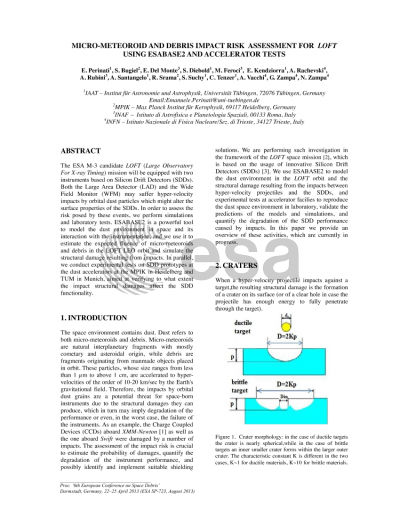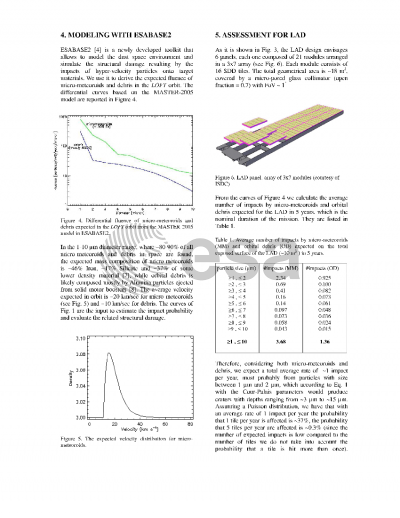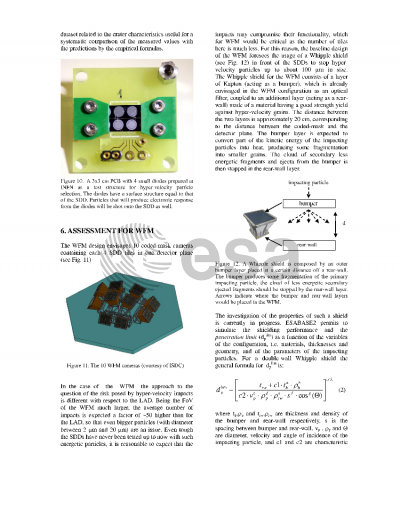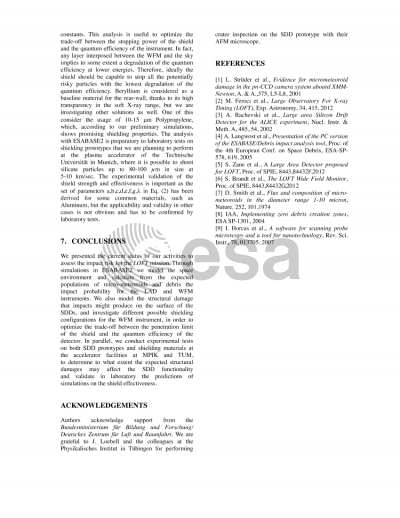Document details

Abstract
The ESAM-3 candidate LOFT(Large ObservatoryFor X-ray Timing) mission will be equipped with two instruments based on Silicon Drift Detectors (SDDs). Both the Large Area Detector(LAD) and the Wide Field Monitor(WFM) may suffer hyper-velocity impacts by orbital dust particles which might alter the surface properties of the SDDs. In order to assess the risk posed by these events, we perform simulations and laboratory tests. ESA BASE2 is a powerful tool to model the dust environment in space and its interaction with the instrumentation, and we use it to estimate the expected fluence of micro-meteoroids and debris in the LOFT LEO orbit and simulate the structural damage resulting from impacts.In parallel, we conduct experimental tests on SDD prototypes at the dust accelerators at the MPIK in Heidelberg and TUM in Munich, aimed at verifying to what extent the impact structural damages affect the SDD functionality.
Preview







